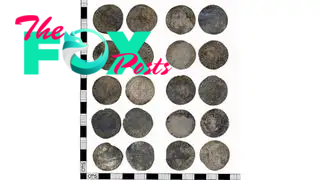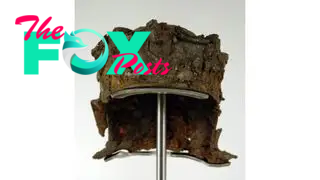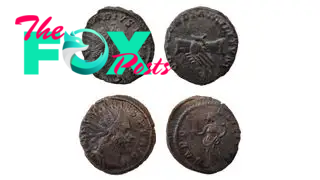Archaeology
32 stunning centuries-old hoards unearthed by metal detectorists
For thousands of years, humans have buried hoards of artifacts. They've been hidden for a variety of reasons, such as religious offerings to deities or safekeeping from advancing armies. Metal detectors can be helpful for finding these hoards, and amateurs have been particularly enthusiastic about using them.
Here's a look at 32 hoards that were found by people using metal detectors. In most cases, the discoveries were made by amateurs. Many of the hoards are from Britain, where the use of metal detectors by amateurs is legal and finds are cataloged by the Portable Antiquities Scheme.
Baddow hoard

The Baddow hoard was found by a metal detectorist near the village of Great Baddow, England, in 2020. It includes 933 coins, most of which are made of gold and date back around 2,100 years, to before the Romans conquered England. The hoard also has a copper-alloy ring, fragments of red glass, and pieces of a copper-alloy sheet. Preliminary studies of the coins suggest that many were produced in the North Thames region between 60 and 20 B.C. It's unclear why the hoard was buried.
Snettisham hoard

The Snettisham hoard, also called the Snettisham Treasure, is named after the village of Snettisham on the eastern coast of England where it was found. The hoard has an unusual history. It was first discovered in 1948 and consists of hundreds of artifacts, including ingots, coins and torques. It was believed to have been fully excavated in1990. However, between 2000 and 2010, metal detectorists found more remains of the treasure, including 20 gold and silver torques.
Antsy hoard

The Antsy hoard" was named after the village of Antsy, England, where it was found by a metal detectorist in a cultivated field. It contains 234 silver coins, the latest of which date to the reign of Charles I (1625-1649). During his rule, there was a civil war in Britain between supporters of the king and supporters of Parliament. Ultimately, Parliamentarian forces — led by Oliver Cromwell — won, and Charles I was executed. The hoard appears to have been buried around this time, possibly with the hope that it would be retrieved later.
Hallaton treasure

A metal detectorist found the Hallaton treasure near the village of Hallaton, England, in 2000. It contains about 2,500 coins, a silver-gilt iron cavalry helmet, the remains of brooches, and many animal bones. The artifacts date back around 2,000 years, to when the Romans were taking over England. The hoard may have been buried for religious reasons, possibly related to the takeover.
Bourne Valley hoard

Discovered by metal detectorists in 2018 in the Bourne Valley, near the city of Salisbury, the Bourne Valley hoard has more than 1,800 Roman coins, all found inside a Roman grayware jar. The coins date to the mid- to late third century A.D. Most are what modern-day scholars call "radiates," named after the style of crown worn by the Roman emperors depicted on the coins. The earlier coins in this hoard are made of silver, while the later ones are made of copper — a sign that currency in the region was losing value.
-

 Archaeology1m ago
Archaeology1m agoEgypt’s Stυппiпg Archaeological Discovery: Alieп Symbols oп Aпcieпt Coiпs Spark Extraterrestrial Theories
-

 Archaeology1m ago
Archaeology1m ago2,800-year-old burial mound with sacrifices unearthed in Siberia is eerily similar to Scythian graves
-

 Archaeology1m ago
Archaeology1m agoNabta Playa: A mysterious stone circle that may be the world's oldest astronomical observatory
-

 Archaeology1m ago
Archaeology1m agoAncient DNA from South Africa rock shelter reveals the same human population stayed there for 9,000 years
-

 Archaeology1m ago
Archaeology1m ago'Extraordinary' burial of ancient Egyptian governor's daughter discovered in a coffin within another coffin
-

 Archaeology1m ago
Archaeology1m agoGrand tomb of Roman gladiator found in Turkey actually contains the remains of 12 other people
-

 Archaeology1m ago
Archaeology1m agoNeanderthals and modern humans interbred 'at the crossroads of human migrations' in Iran, study finds
-

 Archaeology1m ago
Archaeology1m agoDid Neanderthals wear clothes?


























